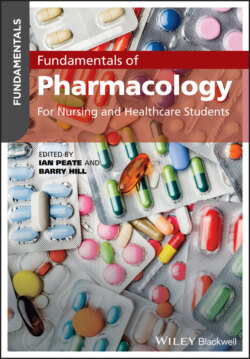Читать книгу Fundamentals of Pharmacology - Группа авторов - Страница 86
Ethical principles and theories
ОглавлениеMaking ethical decisions is about deciding on the right way to act in a given situation; this is underpinned by the moral values held by an individual or group. In 1979, Beauchamp and Childress (1957) developed a four‐point theoretical framework to be used as a method of analysing ethical dilemmas in clinical medicine. The framework included beneficence, non‐maleficence, autonomy and justice. These principles remain in healthcare along with the addition of a further two principles. Today the following ethical principles apply:
beneficence
non‐maleficence
autonomy
justice
veracity
fidelity.
The principles outlined here are commonly felt to underpin judgments that health professionals believe to be right. First, beneficence, whereby we should endeavour to do good. This extends to protecting others and defending their rights, preventing harm and helping others. It is argued by some, such as Pellegrino (1988), that beneficence is the only fundamental principle within healthcare ethics and that the sole purpose of medicine should be to heal. By this assumption, medicines such as contraception, and treatments for conditions such as infertility, erectile dysfunction or aesthetics, could fall beyond its purpose. However, the notion of ‘healing’ is complex and dynamic, referring to more than just the rectifying of an immediate physical ailment or condition. Contraception, fertility treatment and plastic surgery support health and wellbeing in a myriad of direct and indirect ways, physically as well as psychologically, which is why the endeavour of beneficence is not as straight forward as it would first appear.
In practice, in order to do good, medical interventions and treatments can often carry a risk of harm and therefore require justification. Non‐maleficence means that by our actions, we should do others no harm. The principle of non‐maleficence therefore cannot be absolute and must be balanced against beneficence. For example, when treating patients with cytotoxic chemotherapy drugs for cancer, we balance beneficence (the potential to do good and eradicate the cancer) against non‐maleficence and the risk of the chemotherapy itself to cause the patient's condition to deteriorate, possibly leading to death.
It is also generally believed that people should have the right to make decisions about what is right for them, provided they have sufficient capacity or understanding to do so. This principle is a respect for the autonomy of the individual and relates to enabling patients to make self‐determined decisions regarding their care. Consent to treatment is a fundamental component of ethical patient care in addition to a legal requirement. It involves a genuine agreement (verbal or written) to receive treatment under circumstances where the patient has been assessed as competent, has been fully informed and where there is no undue pressure exerted (Herring, 2018). Beauchamp and Childress (1957) have argued that no decision can be truly autonomous, as patients rarely have the relevant knowledge to hold a full understanding of treatment options and, as such, are vulnerable to the coercion of health professionals who feel that they are best placed to make decisions in the interests of their patients (paternalism). However, increasingly patient groups have sought to increase autonomy for patients through changes in policies and practices which decrease the potential for coercion and increase patients’ freedom to act (Williamson, 2010). An example of this has been seen in recent years, as a greater emphasis has been placed on models of shared decision‐making between health professionals and patients. The shared decision‐making approach seeks a balance between paternalistic care and the informed consent approach. Paternalistic care is where decisions about care are made by health professionals (predominantly doctors) and patients passively receive the care prescribed. This model does not factor in patients' own values and beliefs and can lead to patients feeling greater distress where there is a negative outcome (Stewart and Brown, 2001). The informed consent approach offers patients greater responsibility and will often involve health professionals offering patients all of the information required and then leaving them to make the decision unsupported. This can lead to patients feeling abandoned and unsure, creating anxiety and distrust (Corrigan, 2003; Deber et al., 2007). The shared decision‐making approach involves health professionals and patients working together to devise a plan of care that is in line with the best available evidence as well as the values and beliefs of the individual patient, aligning to the principle of true autonomy.
